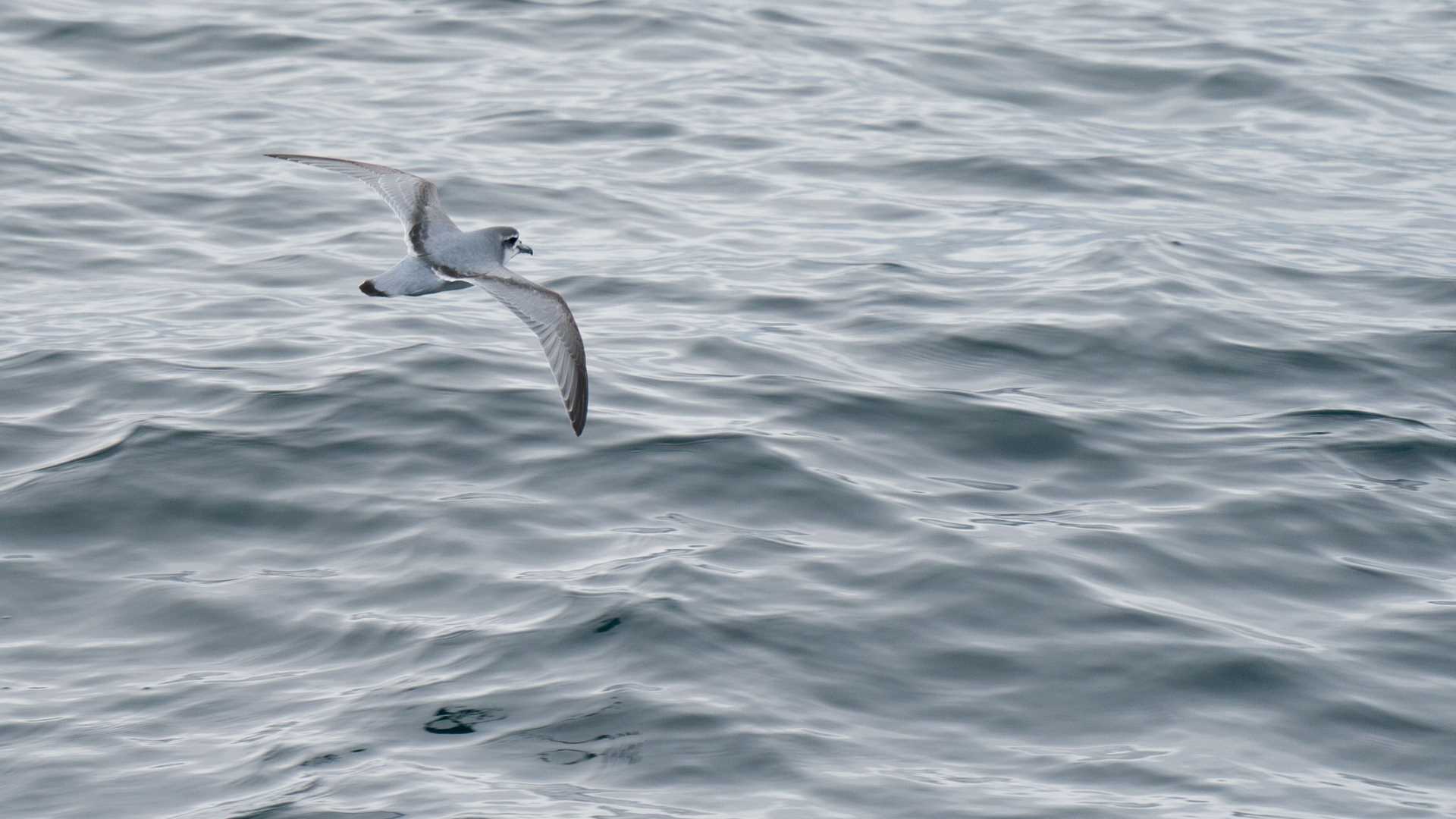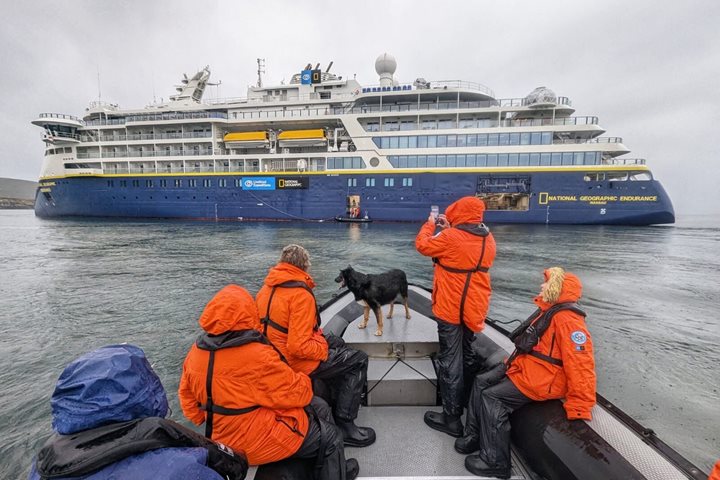Sometimes less is more. From the confines of a ship at sea, little can be observed. Even a casual observer, stepping outside from time to time, would miss one of the most abundant species in this part of the planet. Blending in with its world of water, the various prion species of the world are at home on the ocean though they breed in huge numbers both on the Falkland Islands and South Georgia.
Today, sailing upon calm seas with nothing but waves and water as far as the eye could see, we were, upon close enough inspection, being escorted east by the occasional prion (Pachyptila desolata and P. belcheri). Densely abundant on their breeding grounds where they nest in the hundreds of thousands, these sea birds emerged from the grey distance in varying numbers throughout the day. Often seen in pairs, they also fly in small squadrons of 5 or 6. Skimming the water’s surface for tiny marine plankton, members of the prion family are also known as “whale birds” as they feed in a similar manner as filter-feeding baleen whales. Their palatal lamellae (comb-like structures on their upper bill) help them strain out water in their efforts to collect their food.
Designed with all the bells and whistles of a sea bird, the fact that these tiny acrobats of the ocean-sky interface also share feeding habits with whales, the largest animals on the planet, reminds me that sometimes less IS more.
IMAGE: Antarctic prion at sea between the Falkland Islands and South Georgia Island. (Photo by Eric Guth)







